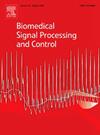血管曼巴:三维血管分割在CTA图像使用曼巴与增强的空间通道注意力
IF 4.9
2区 医学
Q1 ENGINEERING, BIOMEDICAL
引用次数: 0
摘要
由于人体血管的复杂、多尺度和细长分支结构,在计算机断层血管造影(CTA)中进行三维血管分割是至关重要的,但也是具有挑战性的。准确的建模需要捕获血管网络中固有的远程依赖关系和多尺度信息。虽然像cnn和视觉变形(ViTs)这样的深度神经网络已经取得了进展,但它们经常面临平衡全局接受场捕获和计算效率的挑战。为了解决这些限制,我们提出了VesselMamba,一种基于Mamba的新型3D血管分割框架,一种具有线性复杂性的远程依赖关系建模方法。VesselMamba在编码器中集成了平行曼巴块,以有效地捕获血管连续性和长期依赖性。此外,该编码器还增加了空间通道注意力与空间金字塔池(SCASPP)模块,有效地建模多尺度信息,优化全局和局部特征的整合,显著提高了分割精度。此外,采用clDice损失与传统交叉熵和Dice损失相结合的复合损失函数来提高分割血管的连通性。这减少了碎片和工件,导致更可靠的分割。对私有和公共数据集的综合消融研究证明了所提出模块的互补性和有效性。实验结果表明,VesselMamba在CTA血管分割任务中达到了最先进的性能,优于现有的方法,为临床诊断和研究提供了强大的工具。本文章由计算机程序翻译,如有差异,请以英文原文为准。
VesselMamba: 3D vessel segmentation in CTA images using Mamba with enhanced Spatial-Channel Attention
3D vessel segmentation in Computed Tomography Angiography (CTA) is crucial yet challenging due to the complex, multi-scale, and elongated branching structure of human vasculature. Accurate modeling requires capturing both long-range dependencies and multi-scale information inherent in vascular networks. While deep neural networks like CNNs and Vision Transformers (ViTs) have demonstrated progress, they often face challenges balancing global receptive field capture with computational efficiency. To address these limitations, we propose VesselMamba, a novel 3D vessel segmentation framework based on Mamba, an approach for modeling long-range dependencies with linear complexity. VesselMamba integrates parallel Mamba blocks in the encoder to efficiently capture vascular continuity and long-range dependencies. Additionally, the encoder is enhanced with a Spatial-Channel Attention with Spatial Pyramid Pooling (SCASPP) module to effectively model multi-scale information and optimize the integration of global and local features, significantly improving segmentation precision. Furthermore, a composite loss function that combines the clDice loss with traditional cross-entropy and Dice losses is employed to improve the connectivity of segmented vessels. This reduces fragmentation and artifacts, leading to more reliable segmentations. Comprehensive ablation studies on private and public datasets demonstrate the complementary nature and effectiveness of the proposed modules. Experimental results show that VesselMamba achieves state-of-the-art performance in CTA vessel segmentation tasks, outperforming existing methods and providing a robust tool for clinical diagnosis and research.
求助全文
通过发布文献求助,成功后即可免费获取论文全文。
去求助
来源期刊

Biomedical Signal Processing and Control
工程技术-工程:生物医学
CiteScore
9.80
自引率
13.70%
发文量
822
审稿时长
4 months
期刊介绍:
Biomedical Signal Processing and Control aims to provide a cross-disciplinary international forum for the interchange of information on research in the measurement and analysis of signals and images in clinical medicine and the biological sciences. Emphasis is placed on contributions dealing with the practical, applications-led research on the use of methods and devices in clinical diagnosis, patient monitoring and management.
Biomedical Signal Processing and Control reflects the main areas in which these methods are being used and developed at the interface of both engineering and clinical science. The scope of the journal is defined to include relevant review papers, technical notes, short communications and letters. Tutorial papers and special issues will also be published.
 求助内容:
求助内容: 应助结果提醒方式:
应助结果提醒方式:


